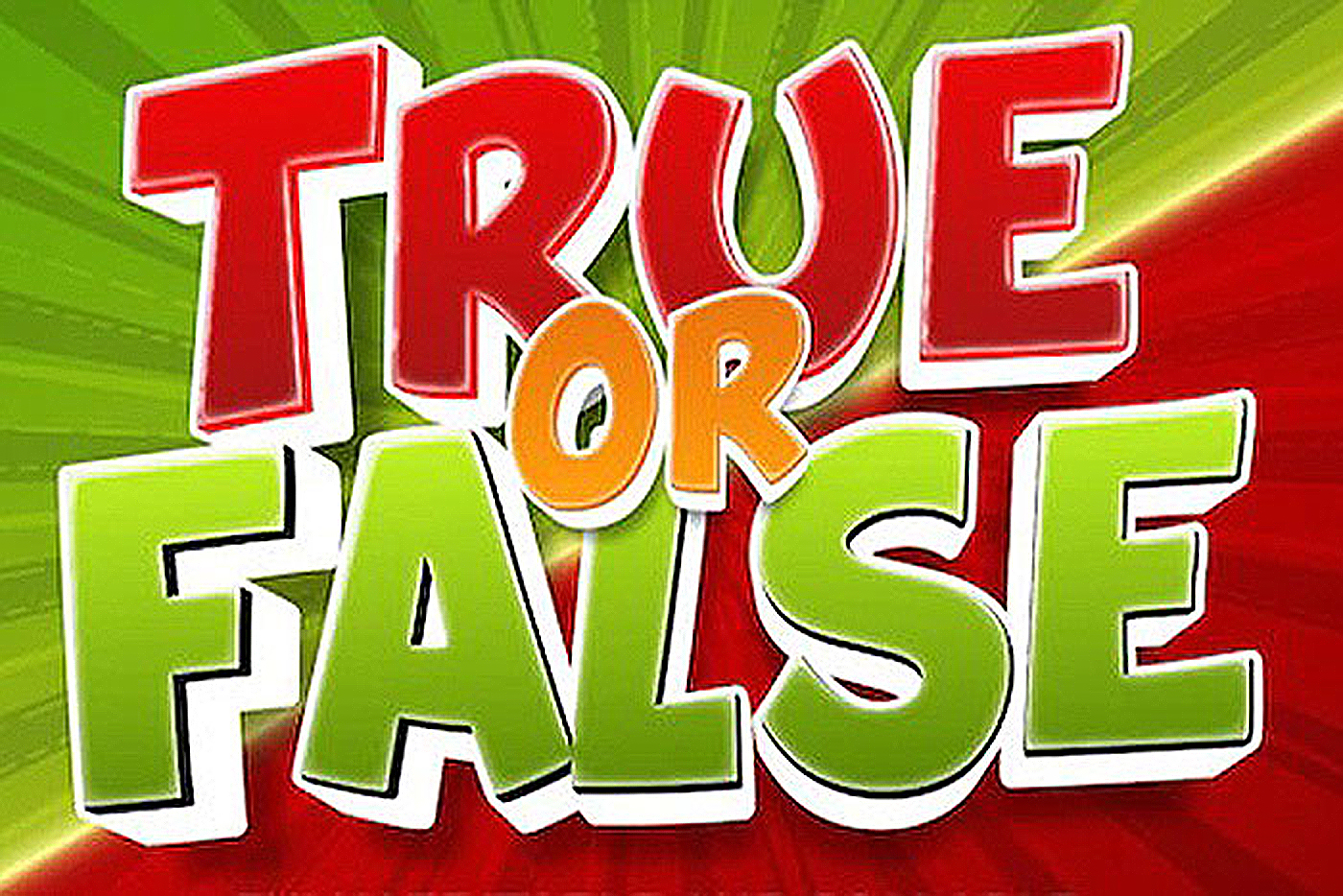
Credit: Freepik.com
A certain Chinese proverb states, "All gardeners know better than other gardeners." The beginning of the new year seems like an appropriate time to address some axioms pertaining to gardening that (for better or for worse) have been passed along from gardener to gardener for decades. Although many good gardening tips have been shared over the years, some unfortunate recommendations have trickled down as well. While we certainly do not want to tarnish the reputation or image of those who might have conveyed them, the following are gardening "pearls of wisdom" that need to be vetted.
1. Adding a layer of gravel to the bottom of a container will improve drainage
This axiom probably dates back to the days of soil-based container media which tended to clog the drainage holes of clay pots. While placing a pot shard across the drainage hole aids drainage, placing a layer of gravel in the bottom of the container would have the opposite effect.
Instead of improving drainage, a layer of gravel causes the roots of a plant to encounter saturated growing media that is poorly drained. The phenomenon is known as the "perched water table effect" that expresses where the water sits (perches) in a container. In short, given the same growing medium is used, taller containers with deeper water columns will drain better (lower perched water table) than will shorter ones. By adding a non-capillary layer of material to the bottom of a container, the depth of the water column in the container is shortened and drainage is reduced. In short, this practice shifts the saturated part of the growing medium upward.
As an analogy, think of a saturated kitchen sponge held horizontally. In a matter of several minutes, water will cease to drain from the sponge because the capillary tension of the sponge equals gravitational pull on the water column. Turn the sponge on its side and additional water will flow out because the depth of the water column on which gravity acts has been extended. The result is, at least for a short while, water will drain due to the force of gravity exceeding the capillary tension of the sponge.
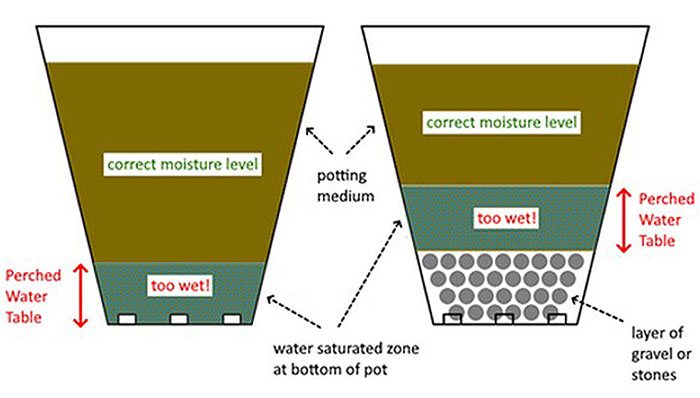
Illustration of the perched water table effect with and without a layer of gravel. Credit: deepgreenpermaculture.com
2. Applying sugar to soil will cause vegetables such as tomato to taste sweeter
The roots of plants are not able to take up complex organic molecules such as sugar. Adding sugar to the soil, however, can stimulate soil microbes which use the sugar as an energy source as they break it down into carbon dioxide and water. Unfortunately, sugar tends to serve as a food source for all soil microbes, both good and harmful. Thus, while sugar (via the action of beneficial microbes) could lead to "healthier" soil and improved plant growth, it also could lead to an increase in soil pathogen populations.
The sugar content of vegetables such as tomatoes is under genetic control as influenced by the environment. Therefore, starting with tomatoes with the proper genetic makeup and growing them in an ideal environment is the best way to improve their sweetness. As a point of interest, most cherry tomatoes taste sweeter than larger, beefsteak types because of a higher content of the sugar fructose. The latter tastes about 1.5 times sweeter to the human tongue than does ordinary table sugar (sucrose).
3. Grass clippings cause thatch to build up in a lawn
Thatch is a layer of living and dead roots, crowns and lower shoots that often develops at the soil surface of lawns. It can weaken and even destroy a lawn if not prevented or removed. Factors favorable to thatch development include excessive growth and conditions unfavorable to the microorganisms that decompose decaying plant parts. Rapid and excessive growth is likely to produce a heavy thatch because plant material is being produced more rapidly than it can be decomposed. Grass clippings allowed to remain on lawns after mowing does not cause thatch.
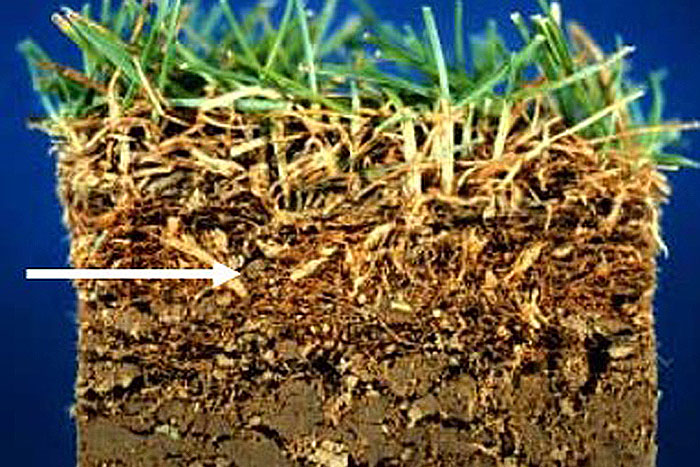
Thatch (white arrow) is a distinct layer of organic matter consisting of living and dead roots, crowns and lower shoots. Credit: Penn State University
4. Misting house plants is a good way to increase the relative humidity of their environment
Especially during the winter, the relative humidity of the average home is lower than that of the Sahara Desert. Many interior plants are endemic to rain forests where they enjoy high humidity. Thus, they suffer in dry air. The practice of misting plants probably is of little benefit to the plants because of its short-lived nature. On average, misting a plant increases the relative humidity around it only for about 20 minutes. Therefore, to use misting as a means of improving the arid atmosphere characteristic of an average interior setting, one would need to mist every 20 minutes, around the clock to have a long-term beneficial effect. It would be far better to increase the humidity of the plant's environment using household humidifiers, or to choose interior plants better adapted to arid environments.
5. Watering a plant's foliage on a hot day will cause its leaves to scorch.
The rationale behind this statement is that droplets of water that alight on the leaves of plants will serve as tiny magnifying glasses and cause the sun to heat foliage excessively resulting in leaf scorch. While there are several factors that can result in leaf scorch, watering plants during the heat of the day is not one of them.
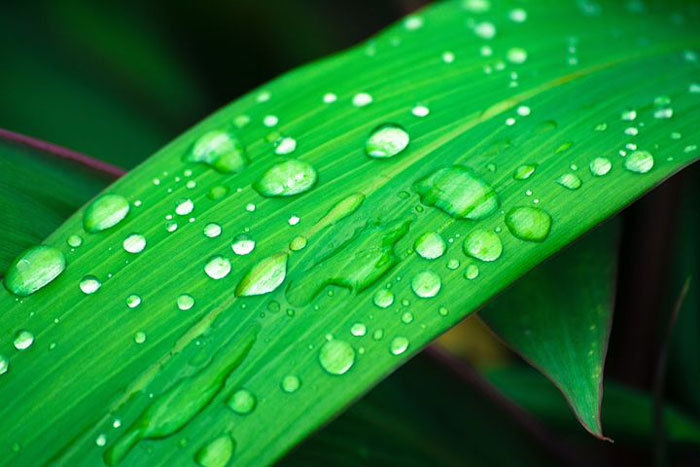
Contrary to popular belief, water droplets on leaves do not magnify the sun's energy. Credit: Pixabay.com
Water plants during the heat of the day is discouraged, however, since there will be greater water loss via evaporation compared to watering during the cool part of the morning. In short, avoid mid-day watering to conserve water and not to protect plants from leaf scorch.
6. Newspaper and cardboard make a good weed barrier
Although layers of newspaper and/or cardboard have an immediate smothering effect on weeds, it is not long lived. When newspaper and cardboard come into contact with soil, microbes in the soil immediately begin to break them down. Unless these materials are covered with a more permanent form of mulch such as wood chips, weeds soon will return to the area. Therefore, newspaper and cardboard, if used alone, would need to be replenished during the course of the growing season.
7. Adding sand to clay soil help to improve porosity and drainage
While it is true that clay soils tend to drain slowly while sandy soils drain quickly, mixing the two is not recommended to improve the drainage of clay soils. The latter is a function of soil particle size (a.k.a., soil texture) as well as soil structure. When sand is added to clay soils, the smaller clay particles tend to infiltrate the pore spaces between the larger sand particles and cement them together. When it dries, the result is something akin to bricks.
Well-drained garden loams are a mixture of sand, silt and clay particles along with organic matter. The regular incorporation of organic matter (e.g., compost, leaf mold, well-rotted manure, or a green manure crop) into tight clay soils is the best way to improve its porosity.
8. Sprinkling coffee grounds around acid-loving shrubs will lower the soil's pH.
Used coffee ground essentially have a neutral pH. Only fresh, non-percolated grounds are acidic in nature. The major advantage of incorporating spent coffee grounds into garden soil is to improve soil health. Coffee grounds contain carbon, nitrogen and other compounds that serve as food for soil organisms. Once fully broken down, coffee grounds increase the organic matter of soil and help to build good soil structure. Gardeners wishing to lower soil pH are advised to apply elemental sulfur (e.g., flowers of sulfur) or a sulfur containing compound such as iron sulfate.
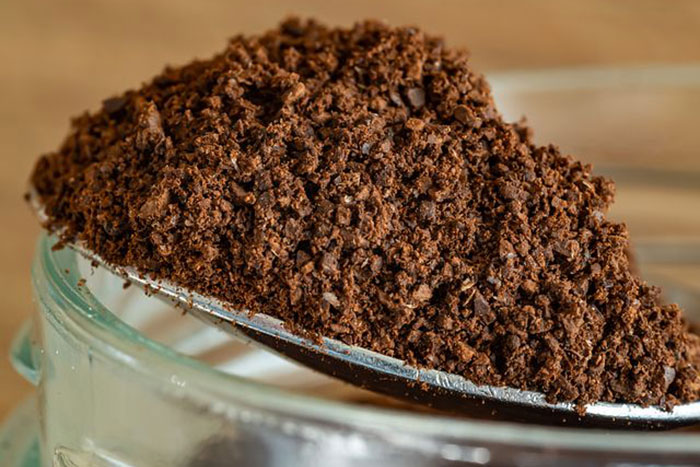
Used coffee grounds are neutral in acidity and have no effect on soil pH. Credit: Pixabay.com
9. Organic pesticides are less toxic than synthetic ones.
The validity of this statement depends entirely on the pesticide in question, and not on its source. The term pesticide is given to any compound or substance used to control a pest. Whether derived from a living organism or synthesized in a lab, all pesticides are toxic. The Environmental Protection Agency rates the toxicity of a pesticide by its LD50 value. In short, this number is the milligrams of active ingredient of the pesticide per kilogram of body weight of exposed test animals that resulted in the death of 50 percent of the population. The lower the number, the more toxic is the pesticide.
As an example of a very toxic organic pesticide, nicotine sulfate (sold as Black Leaf 40) was a popular early insecticide derived from common tobacco. Although very effective as an insecticide, it has an oral LD50 value of only 50, making it quite toxic to warm blooded animals. Conversely, dinotefuran (sold under brand name Safari®) is an effective synthetic insecticide with a LD50 value of 2,000. Again, compounds with a higher LD50 are less toxic than those with a lower one.
Examples of safe organic and very toxic synthetic pesticides also can be cited. Aazadirachtin (a derivative of the neem tree marketed under several brand names) is an effective organic insecticide with an LD50 rating of 3,540. Conversely, aldicarb (a synthetic insecticide sold as Temik®) has the remarkable LD50 rating of less than 1.
In summary, before contemplating the use of any pesticide, gardeners should consider its inherent risks, both personally and to the environment. The pesticide label contains safety information and should be thoroughly studied before purchasing and using a pesticide.
10. Planting muskmelons next to cucumbers will change their taste
First, even though they belong to the same plant genus (Cucumis), muskmelons and cucumbers cannot cross-pollinate one another. Muskmelons have 24 chromosomes while cucumbers have only 14.
Second, even if cross-pollination was possible, the result of the cross would not be manifest until the following generation, when the cross-pollinated seeds were planted. In short, whatever the genetic makeup of the seeds it contains, the "flesh" of the muskmelon is maternal tissue which is not influenced by the genetic makeup of seeds encased in it.
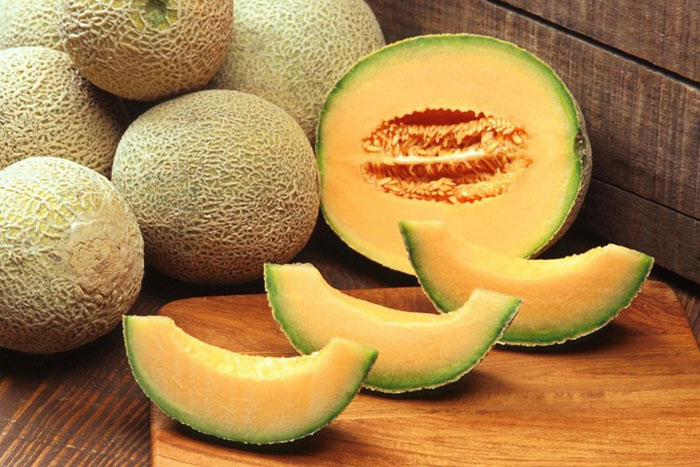
The taste of muskmelons is dictated by genetics and environment, not by the plants growing next to them in the garden. Credit: Pexels.com